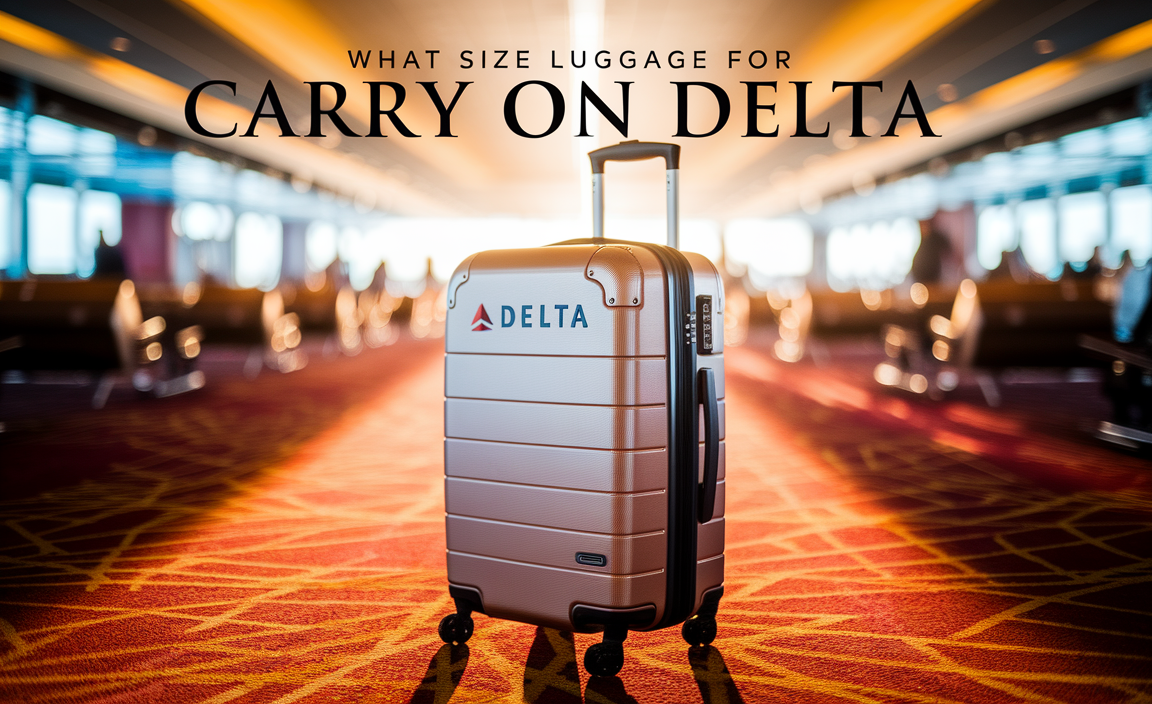Barcelona First-Timers Guide: Essential Tips
Planning your first trip to Barcelona? This guide offers essential, easy-to-follow tips for a stress-free and memorable experience. From navigating public transport and understanding local customs to tasting delicious food and packing smart, we’ve got you covered. Get ready to explore this vibrant city with confidence, comfort, and insider advice.
¡Hola, travelers! Dreaming of sun-drenched plazas, incredible architecture, and mouthwatering tapas? Barcelona is a city that truly has it all. But if it’s your very first time, you might be wondering where to begin. It’s easy to feel a little overwhelmed by all the amazing sights and sounds. Don’t worry! This guide is here to break it all down, making your Barcelona adventure smooth and enjoyable. We’ll cover the must-knows so you can focus on soaking up the Catalan magic.
Getting Around Barcelona Like a Pro
Navigating a new city can seem daunting, but Barcelona’s public transport is wonderfully efficient and easy to use. Getting around without a car is totally doable and even recommended to avoid parking hassles and city traffic.
Barcelona boasts an excellent public transportation system that makes it a breeze to explore all its nooks and crannies. You’ll find a variety of convenient options, from the speedy metro to trusty buses and even trams. Walking is also a fantastic way to discover hidden gems.
The Metro: Your Speedy Shortcut
The Barcelona Metro is a clean, efficient, and extensive network that will get you to most major attractions quickly. It’s often the fastest way to travel across the city, especially during peak hours.
How it works: You buy tickets at station machines or ticket booths and need to validate them before entering the platform area.
Ticket options: For first-timers, consider a T-casual card. It’s a multi-person travel card valid for 10 journeys on the metro, bus, tram, and FGC (Catalan Railways) in Zone 1, which covers most tourist areas. A single ticket is also an option if you plan to walk mostly.
Best for: Reaching popular spots like Sagrada Familia, Park Güell, Gothic Quarter, and Barceloneta beach.
Buses & Trams: Scenic Routes
Buses are a great complement to the metro, reaching areas the subway doesn’t. Trams are more limited but offer convenient links in specific parts of the city.
Using them: You can use your T-casual card on buses and trams too. Simply tap your card when you board. Some buses have ticket machines, but it’s best to have your travel card ready.
Good to know: Buses can be a scenic way to see different neighborhoods as you travel.
Walking: The Best Way to Discover
Barcelona is a city best explored on foot. Many of its most charming streets, plazas, and architectural wonders are best appreciated at a leisurely pace.
Embrace the stroll: Wander through the Gothic Quarter, get lost in the winding alleys of El Born, and take your time admiring Gaudí’s masterpieces up close.
Pack comfortable shoes: This is non-negotiable! You’ll be doing a lot of walking, so prioritizing comfort is key to enjoying your days. Think supportive sneakers or walking sandals.
Taxis & Ride-Sharing: For Convenience
When you need a direct ride or are traveling late, taxis and ride-sharing apps are available.
Taxis: Easily identifiable by their black and yellow colors, they are readily available. You can hail them on the street or find them at designated taxi stands.
Ride-sharing: Apps like Uber and Cabify operate in Barcelona. They offer a convenient way to book a car and pay through the app.
Essential Barcelona Itinerary Building Blocks
To make the most of your first visit, having a rough idea of what you want to see is helpful. Barcelona is packed with attractions, from ancient history to modern marvels.
Must-See Landmarks
These are the iconic sights that are often top of any first-timer’s list.
Sagrada Familia: Gaudí’s unfinished masterpiece is a breathtaking basilica. Book tickets months in advance to secure your spot and avoid disappointment.
Park Güell: Another Gaudí gem, this whimsical park offers stunning city views and unique architectural elements. Again, pre-booking is essential.
Gothic Quarter (Barri Gòtic): Lose yourself in the maze of narrow medieval streets, discover hidden plazas, and visit sights like the Barcelona Cathedral.
Las Ramblas: A famous tree-lined pedestrian street perfect for a lively stroll, street performers, and browsing market stalls. Be mindful of your belongings here.
La Boqueria Market: Located off Las Ramblas, this vibrant food market is a feast for the senses, offering fresh produce, juices, tapas, and more.
Barceloneta Beach: Enjoy the Mediterranean breeze, relax on the sand, or enjoy seafood at one of the many restaurants along the promenade.
Casa Batlló & Casa Milà (La Pedrera): Two more of Gaudí’s fantastical buildings on Passeig de Gràcia, showcasing his unique architectural style.
Planning Your Days
Don’t try to cram too much into one day. It’s better to enjoy a few highlights thoroughly than to rush through many.
Group attractions by location: For example, explore Park Güell in the morning and then head to the Gràcia neighborhood. Or, spend a day exploring the Gothic Quarter and El Born.
Book in advance: For Sagrada Familia, Park Güell, and other popular ticketed attractions, booking online weeks or even months ahead is vital. Websites like Barcelona Turisme offer official ticket sales and information.
Consider a Barcelona Pass: If you plan to visit many museums and attractions, investigate whether a city pass makes financial sense for you.
Savoring Barcelona: A Culinary Adventure
Barcelona is a paradise for food lovers. From traditional tapas to innovative cuisine, your taste buds are in for a treat.
Eating well is a cornerstone of the Barcelona experience. Whether you’re seeking authentic local flavors or modern gastronomic delights, the city offers something for every palate and budget. Don’t be afraid to explore beyond the tourist hotspots for the most genuine culinary discoveries.
Tapas Culture: Small Bites, Big Flavors
Tapas are small Spanish savory dishes, typically served with drinks. It’s a wonderful way to sample a variety of local specialties.
What to try: Patatas bravas (fried potatoes with spicy sauce), pan con tomate (bread with tomato), jamón ibérico (Iberian ham), gambas al ajillo (garlic shrimp), and pimientos de Padrón (small green peppers).
How to tapas: Go to a tapas bar, order a drink, and usually, a small tapa comes with it. You can then order more tapas to share with your group. Many places offer a ‘raciones’ (larger portion) of popular tapas.
Timing: Locals often enjoy tapas between 8 PM and 10 PM.
Must-Try Catalan Specialties
Beyond tapas, Catalonia has its own delicious traditional dishes.
Paella: While originating from Valencia, you’ll find excellent seafood paella in Barcelona, especially near the coast.
Crema Catalana: A delicious dessert similar to crème brûlée, but with a distinct citrus and cinnamon flavor.
Escalivada: A smoky salad of roasted eggplant, bell peppers, onions, and tomatoes.
Where to Eat
Local Markets: La Boqueria is famous, but try Mercat de Sant Antoni or others for a more local feel. Grab fresh juices, empanadas, or a quick bite.
Tapas Bars: Explore neighborhoods like El Born and Gràcia for authentic tapas experiences.
“Menu del Día”: Many restaurants offer a fixed-price lunch menu on weekdays (usually 2-3 courses with a drink and bread) for an excellent value. Look for signs outside.
Smart Packing for Comfort and Convenience
Packing for Barcelona is all about versatility and comfort. Think layers, comfortable shoes, and essentials that make travel smoother, especially if you’re managing personal care needs.
Packing smart can significantly enhance your travel experience. For Barcelona, it means being prepared for changing weather, city exploration, and ensuring your personal comfort is prioritized every step of the way. We believe in equipping you for a stress-free journey, from the moment you leave home to your return.
Clothing Essentials
Barcelona’s weather is generally Mediterranean, meaning mild winters and warm summers.
Spring/Autumn: Long pants, t-shirts, light sweaters or jackets, and possibly a scarf.
Summer: Lightweight clothing, shorts, t-shirts, sundresses. Don’t forget swimwear if you plan on the beach.
Winter: Lighter sweaters, a medium-weight jacket, long pants.
Footwear: Crucial! Comfortable walking shoes are a must. Bring at least one pair of broken-in sneakers or supportive walking sandals. A slightly dressier pair for evenings might be nice, but not essential for most activities.
Travel Accessories
These can make your trip much more comfortable and manageable.
Daypack or Crossbody Bag: For carrying essentials like water, sunscreen, a map, and your wallet. Choose one that’s secure and comfortable for all-day wear.
Reusable Water Bottle: Stay hydrated and save money by refilling your bottle at public fountains or your hotel.
Sun Protection: Sunscreen, sunglasses, and a hat are vital, especially during sunny months.
Portable Power Bank: Keep your phone charged for navigation, photos, and staying connected.
Travel Adapter: Spain uses Type F sockets. Ensure you have the correct adapter for your electronics.
Personal Care & Comfort Items
For a truly stress-free trip, especially for those who might need extra support like adult or child diapers for peace of mind during long travel days or unexpected situations, having quality, discreet products is key.
Comfortable Adult Diapers: For long flights, extended sightseeing days, or if you have specific health needs, discreet and absorbent adult diapers can offer invaluable security and comfort. Look for brands known for their breathability and odor control.
Child Diapers/Pull-ups: If traveling with little ones, having a sufficient supply of child diapers or pull-ups is essential for easy changes on the go. Pack more than you think you’ll need, especially for flights and day trips. Brands offering good absorbency and a comfortable fit are ideal for active kids.
Small First-Aid Kit: Include essentials like plasters, antiseptic wipes, pain relievers, and any personal medications.
Hand Sanitizer & Wipes: Handy for keeping clean between opportunities.
Luggage Tips
Pack Light: The less you carry, the easier it is to move around. Stick to essentials.
Carry-on Focus: If possible, try to travel with just carry-on luggage to save time at airports and reduce the risk of lost baggage.
Travel Organizers: Packing cubes can help you maximize space and keep your belongings tidy.
Navigating Barcelona’s Culture and Safety
Understanding a few local customs and safety tips will ensure your trip is not just fun but also smooth and secure.
Key Customs and Etiquette
Greetings: A handshake is common for formal introductions. Friends and family often kiss on both cheeks.
Siesta: While less common in major tourist areas and large shops, some smaller businesses might close for a few hours in the early afternoon.
Meal Times: Spaniards eat later than many other cultures. Lunch is typically between 2 PM and 4 PM, and dinner often starts after 9 PM.
Language: Catalan and Spanish are the official languages. While many people in tourist areas speak English, learning a few basic Spanish or Catalan phrases like “Hola” (Hello), “Gracias” (Thank you), and “Por favor” (Please) will be appreciated.
Staying Safe
Barcelona is a generally safe city, but like any major tourist destination, it’s important to be aware of your surroundings.
Pickpockets: Be extra vigilant in crowded areas, especially on Las Ramblas, on public transport, and at popular tourist sites. Keep your valuables secure and out of sight. Use a crossbody bag worn in front, or a money belt.
Scams: Be wary of common tourist scams. If something seems too good to be true, it probably is.
Emergency Numbers: In Spain, the primary emergency number is 112. This line is available in multiple languages. You can find more information on emergency services at the Local Government of Catalonia for Emergencies.
Frequently Asked Questions About Barcelona
Here are answers to some common beginner questions.
Is Barcelona safe for solo female travelers?
Yes, Barcelona is generally considered safe for solo female travelers. However, it’s always advisable to exercise caution, especially in crowded tourist areas and at night. Being aware of your surroundings and taking general safety precautions (like securing your belongings) will help ensure a safe trip.
What is the best way to buy tickets for attractions without long queues?
The absolute best way is to book your tickets online in advance. For major attractions like Sagrada Familia and Park Güell, booking weeks or even months ahead is highly recommended. This not only saves you time queuing but also guarantees your entry, as capacity is often limited.
How much should I tip in Barcelona?
Tipping is not as customary or expected in Spain as in some other countries. For good service in restaurants, leaving a small amount (5-10% of the bill if you’re very satisfied, or just rounding up) is appreciated but not obligatory. For short taxi rides, tipping isn’t necessary; for longer journeys, you might round up the fare.
When is the best time of year to visit Barcelona?
The shoulder seasons—spring (April to June) and autumn (September to October)—are often considered the best times to visit. The weather is pleasant, and there are fewer crowds than in the peak summer months. Summer (July to August) is warm and lively but can be hot and crowded. Winter (November to March) is mild, with fewer tourists, making it a good option for budget travelers.
Can I drink tap water in Barcelona?
While tap water in Barcelona is safe to drink according to health standards, many people find its taste to be strong due to the high mineral content or chlorine. Many visitors prefer to buy bottled water or drink filtered water. You can also use a reusable bottle to refill from filtered water stations if available.
What is the T-casual card, and is it worth it for first-timers?
The T-casual is a zone-based travel card for 10 journeys. For Zone 1, which covers most tourist attractions, it’s usually a very cost-effective option for first-timers who plan to use public transport frequently. It’s personal and cannot be shared for the same journey but can be used by different people on different journeys.
How do I get from Barcelona Airport (BCN) to the city center?
There are several convenient options:
Aerobus: A dedicated tourist bus service that runs frequently to Plaça Catalunya and stops at key locations. It’s efficient and relatively inexpensive.
Metro: The L9 Sud line connects both terminals to the city’s metro network. You’ll likely need to transfer to another line to reach your final destination.
Train: The R2 Nord line from Terminal 2 is a cost-effective option connecting to central stations like Sants and Passeig de Gràcia.
* Taxi/Ride-Sharing: The most direct but also the most expensive option.
Final Thoughts for Your Barcelona Journey
Stepping into Barcelona for the first time is an experience you won’t forget. With these essential tips in hand—from mastering the metro and booking attractions ahead of time to savoring delicious local food and packing smart—you’re well-equipped for an incredible adventure. Remember that the best travel moments often come from embracing the unexpected, wandering off the beaten path, and simply enjoying the vibrant atmosphere of this Catalan capital. Relax, explore, and let Barcelona enchant you. ¡Buen viaje!






